Weekly Roundup, October 18 Edition
Latin Mass and youth; Sammons interview; Chant woes; Guéranger on heresy; Favorite reads; GOOD NEWS; Synod commentary; and more
Thank you, new subscribers, and welcome, new readers! Tradition & Sanity continues to grow, and you are an integral part of it.
I remember Arvo Pärt once holding up a trench coat in front of a bunch of musicians and then dropping it on the floor. Smiling, he said to them: “That’s what a composer is like when he has no musicians to perform his work.” I feel it’s similar for writers: sure, we can fill pages by ourselves, in a cave or a café, but we’d feel pretty useless most of the time without an audience of readers; we’d feel like that trench coat on the floor.
So again, thanks for taking the time to read our Substack (Julian’s and mine). We know there’s a lot to read out there (even just on Substack alone!), so your investment here is appreciated.
As some of you may recall from past announcements, starting today I’ll be on a pilgrimage “in the footsteps of St. Paul” in Greece and Turkey, visiting some of the many famous sites in pagan and Christian history, including Athens, Corinth, Delphi, Thessaloniki, Philippi, Thermopylae, Mykonos, Ephesus, and Patmos. I will certainly pray for Tradition & Sanity readers, especially in the Cave of the Apocalypse and in the Home of the Blessed Virgin Mary (yes, I fully accept the tradition that Our Lady ended her earthly life near Ephesus; anyone who doubts it should just read Fr. Deutsch’s Our Lady of Ephesus, included in the picture above — which shows some of what I’ve been reading to get ready, and some of what I’ll take with me: chant for the sung Masses, and a rosary for the long walks and sacred sites). This trip is all the more meaningful to me inasmuch as I chose “Paul” as my confirmation name, very deliberately with the Apostle’s tireless preaching of the Gospel in mind, and inasmuch as St. John has been a lifelong companion, both because my wife and I were married on his feastday, and because he is the patron saint of theologians.
While I’m gone, the Monday, Thursday, and Friday articles will continue to be published, but the “weekly roundup” feature will not resume until I get back.
The Latin Mass and the Youth
I'm thrilled to have played a small part in this just-released book from Cruachan Hill Press (my deepest thanks to Phillip Campbell for the invitation):
It’s incredibly inspiring to read the testimonials from so many young people (42 in toto) from all over the world—cradle Catholics, converts, reverts, singles, married, discerners of vocations. They all find something powerful and life-changing in the TLM. The Church really needs to take this witness seriously and to make ample room for the timeless rites that speak to postmodern souls.
Find out more about this book and pre-order here (shipping early November). I highly recommend picking up copies for priests (and, if you know any bishops, definitely them above all).
Turned Around
My new book from TAN is taking the world by storm!
Ha, I wish... books on the liturgy don’t become NYT bestsellers. But at least it has this going for it: Karl Keating, the founder of Catholic Answers, says:
The public argument in favor of the Traditional Latin Mass has been waiting for a book that handles common objections thoroughly yet winsomely. This is that book.... The writing is clear, approachable, and often elegant. Any reader, no matter his current liturgical preference, will come away instructed, intrigued, and edified.
Eminent Thomistic philosopher and bête noire of progressives on Twitter, Edward Feser, agrees:
Peter Kwasniewski’s Turned Around will contribute mightily to the restoration of liturgical and spiritual understanding.
Director of the Mass of the Ages Trilogy Cameron O’Hearn chimes in:
The most common objections to the TLM answered, once-and-for-all! Dr. Kwasniewski has crystallized centuries-old wisdom with his always persuasive prose and left us with a literary treasure. It might be the most convincing defense of the TLM I’ve ever read.
Lastly, Eric Sammons, editor of Crisis Magazine, has this to say:
Defending the TLM’s “foreignness” to modern minds is a high barrier that’s difficult to overcome. In these pages Dr. Kwasniewski not only ably accomplishes this task, he “turns around” the common objections against the TLM to show that it’s the Mass of Ages that is truly at home in a fully Catholic worldview.
Order a copy today, either at TAN Books or at Amazon — and, while you're at it, consider getting another copy for a friend or relative!
Speaking of Eric Sammons, earlier this week, prompted by Turned Around, he conducted an extensive interview with me for Crisis Point, covering some of the major difficulties people (both ordinary faithful and academic liturgists) have with the TLM. In the end we covered a good bit of ground. Although the content would be appreciated by TLM attendees, we made a special effort to address mainstream Catholics. If you typically or exclusively attend the Novus Ordo, this would be a good interview to watch or listen to. Or, if you’re going to the Latin Mass but you have friends or family who are skeptical, curious, or nonplussed, send this to them:
Those who’d like to see a transcript will find it here.
Is “Other Things Being Equal” a Kiss of Death?
This week at NLM, I posted a challenging guest essay by Garrett Meyer. For many years, defenders of Gregorian chant have leaned heavily into Sacrosanctum Concilium, and there can be no doubt that the drafters of its chapter on sacred music were indeed committed to the promotion of chant and polyphony. However, Meyer challenges us to rethink the implications of the phrase “ceteris paribus” in SC 116 — that chant should have chief place, “other things being equal” — and to ask whether this insertion was not, in fact, a gentle kiss of death that sent the chant packing. Those who are interested in sacred music should certainly give this article a read. I consider it to be another nail in the already nail-studded coffin of SC. In other words, we should not try to lean on that rickety structure. Our reasons for chant must be deeper than magisterial positivism.
The “Anti-Liturgical Heresy”
I never, ever, ever thought Adoremus would publish an article like this: Richard Kaleb Hammond’s “The Voice of Tradition: Prosper Guéranger’s ‘Anti-Liturgical Heresy,’” which, incidentally, quotes Ratzinger, Alcuin Reid, and Kwasniewski. Although Hammond is careful not to make the application too strongly, it’s obvious that every one of Guéranger's criteria is verified in the Novus Ordo. This is hot stuff for that website (or for any non-trad website).
The development of the liturgy can be measured according to Guéranger’s description of this heresy as he found it in the early Church, the Protestant Revolution, and through the errors of the Jansenists and Gallicans of Guéranger’s own time, as well as the varied threads of this heresy which were woven into the Liturgical Movement in the 20th century. Guéranger divided the anti-liturgical heresy into 12 distinct criteria: (1) hatred of Tradition; (2) substitution of readings exclusively from Scripture for ecclesiastical formulae; (3) fabrication of innovative formulae; (4) antiquarianism; (5) demystification of the liturgy; (6) “pharisaical coldness”4 in liturgical prayer; (7) removal of all intermediaries - Marian devotion, communion of saints, etc.; {8} replacement of sacred languages with the vernacular; (9) simplification of rites and easing of religious duties; (10) rejection of papal authority; (11) laicization, denying the sacramental nature of the ministerial priesthood; and (12) confusion of the roles of priests and laity in liturgical reform.
Really, the only point that is not verified in the Novus Ordo is number 10, because creating a new rite and forcing it on everyone was in fact the most massive (ab)use of papal authority in the history of the Church. The Achilles’ heel of Guéranger, after all, is his ultramontanism, which he bequeathed to Solesmes and French Benedictinism in general, and which has nearly been their undoing. Trads would reject all 12 points except for 10, because they hold that there are limits to what a pope can and should do to the liturgy.
In any case, if you’re not familiar with what Guéranger writes on this topic, prepare to be amazed. He could have been peering into Bugnini’s brain.
Some favorite reads this week
Jason Craig, whose hospitality I enjoyed in North Carolina a couple of years ago, was among the huge number of people who suffered the effects of Hurricane Helene. At Crisis Magazine he offers a profound reflection on nature, humanity, and the Machine, from someone who discovered that the hurricane had not only negative effects, but some very positive ones too.
Over at Voice of the Family, Alan Fimister — ages ago, a student of mine in Gaming, Austria, and as the years have passed, an increasingly valued theological partner — gives us an outstanding review of David Hunt’s book on usury. It’s one of those reviews that breaks new ground itself, and helps the reader see the world differently.
Phillip Campbell writes beautifully about the superiority of walking to church. Like the author, I too lived in Gaming, Austria, for 7 1/2 years in my case, and there we walked every day to Mass or Divine Liturgy, just as he did in his time there. Everything he says about walking conforms with my family's experience. I agree that it's more natural and peaceful to walk to church rather than to drive, though it’s hard to do in the USA given our sprawl and the all-too-few locations of TLMs. It was always a dream of mine to live within walking distance of a daily TLM, and five years ago, that dream came true: my wife and I live less than a mile away from our oratory, a lovely ten minute walk, doable in almost any weather. It’s a perfect “buffer” before and after Mass, and gets these legs moving (as they should be doing more often!).
Fr. Z sums up for us a recent gigantic survey done among American Catholics about what promotes, and what doesn’t promote, belief in the Real Presence. There are no surprises here, and yet it’s never a bad thing to see the Church’s traditional practices “voted up” on a large scale.
Matthew Walther asks if social conservatism has a future in the USA:
There is the not exactly remote prospect that, whether they vote or not, social conservatives are—or will soon be—so marginal that they are no longer of any importance to either of our major political parties. They will be neither martyrs nor savvy junior partners in the new post-Trump center-right coalition, but something like the English Catholic recusants during the eighteenth century, who were excluded from public life—Parliament, the universities, the professions—but otherwise largely allowed to go about their business (the occasional anti-Papist riot notwithstanding).
Isaac Riley offers a no-holds-barred moral argument against migration.
I like what Denise Trull says about mystagogy in the Mass, praising Fr. Claude Barthe’s Forest of Symbols.
Good news (my favorite section)
In honor of the 500th anniversary of the birth of Giovanni Pierluigi da Palestrina (1525-1594), one of the mightiest sacred music festivals ever conceived is about to begin!
You can hear three of the world’s greatest vocal ensembles — the Gesualdo Six, the Tallis Scholars, and the London Oratory Schola Cantorum — together with many other fine groups, performing the glorious Masses and motets of the Prince of Polyphony in the context for which they were intended: the Holy Sacrifice of the Mass.
That is the ambitious program undertaken for the glory of God and the edification of the faithful by the Sacred Heart of Jesus Catholic Parish in Grand Rapids, Michigan, starting on December 9, 2024, and running to December 8, 2025. Read more here.
But that’s not the only organization thinking big. There is Musica Transalpina, which organizes performances, in liturgical settings, of massive Baroque masterpieces that have often not been performed for decades or centuries. It is tremendous to see such works finally receiving the attention they deserve in the context for which they were created. Case in point:
Read more here.
In a way, I consider the following paragraph, sent to me by a priest, to be good news:
Modernism’s most notable characteristic is also its greatest weakness: the anti-dogmatic principle. Modernists want to destroy dogmas, but they can’t dogmatically do so. Those in the best position to destroy the Church can’t actually bring it off. That’s why Francis has declared his heretical position on the death penalty going as far as he can without using dogmatic language. Obviously, future “dialogue” and “accompaniment” could alter this view yet again — or take it off the table. Indeed, a future pope could dogmatically declare that the traditional view is correct and must be held. I see all this as God’s providence to preserve the Church. Meanwhile, it lets us off the hook, as we ignore what is unclear or what shows no obvious way of being reconcilable with past teaching.
That’s the recipe: hold what is true, do what is right, pray for divine intervention, and basically write off the rest.
More good news: the “Master Catechism” has just been released. This is no “ChatBot,” and it’s far more potent than “checking the Catechism” (of John Paul II). The Master Catechism makes use of AI technology to access dozens of approved catechisms from across the last 1,000 years, offering instant, concise, reliably Catholic answers to questions on faith and morals, with a stack of citations you can read for yourself, directly in the app. You might say, it’s the world’s first “Catholic fact-checker”! Head over and give it a try. I think we can say this is cutting-edge technology being put to a good use.
(Nota bene: You can choose whether to search with only classical catechisms, or also add contemporary — which effectively means, Bishop Schneider’s Credo. I would recommend, for now, selecting only classical, because it will draw on a wider range of sources. Try, for example, typing in: “Is the death penalty always inadmissible?” or “Is the death penalty contrary to human dignity?” and see what you get.)
When we visit great churches in Europe we often say “Why can’t modern people build anything like this?” Beyond the architecture itself, we marvel at the glasswork, stonework, and woodwork, and wonder if such could ever be done again. The reality is, yes, it could be — and it is happening here and there, as the new stonework in Knoxville shows us.
Norway’s Catholic bishops have signed a declaration affirming traditional Christian views on gender and sexuality, joining over thirty Christian communities. The document, titled “Ecumenical Declaration on Gender and Sexual Diversity,” asserts that humanity’s biological sex is defined at conception and challenges contemporary views on gender identity, which it describes as ideologically driven and scientifically unfounded.
Bad news that requires a virtuous reaction
The new batch of cardinals named by Francis are, it turns out, sorely deficient in orthodoxy. There’s no question he’s trying to stack the deck: after December’s consistory, a record-breaking 80% of voting cardinals will have been appointed by him, and the ideological skew is obvious in most of the appointees across the years.
Canon Law, by the way, says (351 §1):
The Roman Pontiff freely selects men to be promoted as cardinals, who have been ordained at least into the order of the presbyterate and are especially outstanding in doctrine, morals, piety, and prudence in action.
Guess this pope has never read that canon.
I try to see this in the perspective of the Passion of Our Lord. He allowed Himself to be overwhelmed by evil, to the point where even the Apostles gave up hope and ran away, considering Him defeated. He allowed every last bit of evil to seem to prevail before destroying it in the Resurrection and opening a way out for fallen man. Now He is allowing the Church to be overwhelmed by evil, before He overthrows the enemy and prevails in a eucatastrophe we cannot even imagine. The moral of the story the first time was: do not lose faith or hope, no matter how bleak the appearances. Let’s not be like the Apostles during the Triduum. Let us rather be like the Blessed Virgin Mary who never wavered and who knew that her divine Son would triumph.
(I will add that some have been lured into thinking that part of Our Lady of La Salette’s authentic message is that “Rome will lose the faith and become the seat of the Antichrist.” As Robert Lazu Kmita shows, it is not.)
Some Synod commentary
If you are interested… which you may not be…
Robert Royal, “The Trinity the Synod Needs”
David Torkington, in “Synodality: Institutionalized Self-Interest and Selfishness,” pulls no punches:
Only those who practice Divine Loving will be able to stand up to and finally destroy the institutionalized self-interest and selfishness that is called Synodality. These Synods and the evil they generate continually commit the sin against the Holy Spirit. That is why I have begun to spell Synodality without a ‘y’ and with an ‘i’ to form the new word Sinodality. There is no such sin as “sin against Sinodality” for which we need to seek forgiveness, for we have not sinned against the Unholy Oligarchy. It is they who have sinned and continue to sin against us. But more importantly, they sin against the Holy Spirit, by committing the sin of blasphemy.
Only those who practice Divine Loving will be able to stand up to and finally destroy the institutionalized self-interest and selfishness that is called Synodality.
They do this in two ways. Firstly, they use Him to deify their own decisions, which are purely human if not positively heretical, as we can see in their latest proposal to relativize Catholic moral teaching. Secondly, they exclude Him from their own spirituality, which is inspired by the wisdom of man, not the wisdom of God. How dare they mock the third person of The Holy Trinity by speaking about listening to the promptings of the Holy Spirit when they are listening to their own unpurified, unruly, and unchristian spirit that is riddled with self-interest and self-seeking.
Lot of crazy stuff in that last link, some of which would effectively negate the dogmatic teaching of Vatican I. The irony is, this papacy has witnessed a massive growth in papolatry, even when people in Rome keep yapping about how they’re going to “decentralize.” I’d love to see some real decentralization in the direction of subsidiarity, local historic rites, and bishops discerning the needs of their flocks rather than having Rome hold their hands, leading them along like schoolboys (as we see happening in the era of Traditionis Custodes and Roche’s regimen). I suppose the flip side is that bishops need to respect their own apostolic dignity and not let themselves be pushed around by functionaries and ideologues.
All roads lead to… the TLM
Anyone who can be in Rome for the Populus Summorum Pontificum pilgrimage, coming up very soon (October 25-27), should plan to be there. It's more important than ever to show up and be seen, to send the message that we’re numerous and we’re not going away.
Sicily reminder
Speaking of pilgrimages… there are still some spots left on the Sicily trip that I’m co-leading, from February 3 to 15, 2025. After the initial over-the-top celebration of the island’s patroness St. Agatha, we’ll visit along the way many churches and pray at the relics of many saints. Lovers of art history will especially relish this tour. The photos below give a taste of the treasures to be found on this island, with its spicy cultural fusion of Greek, Roman, Byzantine, Gothic, and Arabic.
You can read more in an interview I gave with Regina Magazine here, and details about the pilgrimage here.
We will have a daily traditional Latin Mass on our trip.
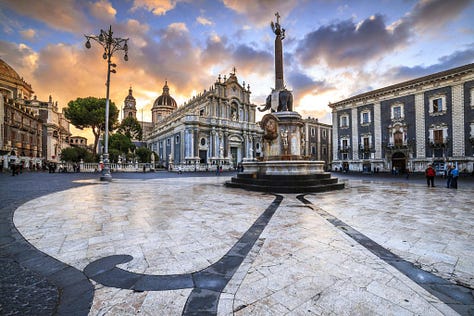
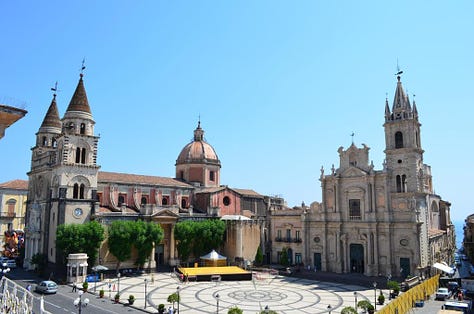


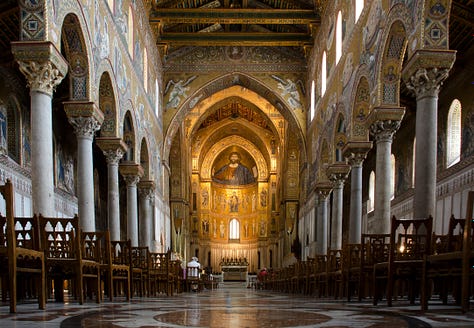
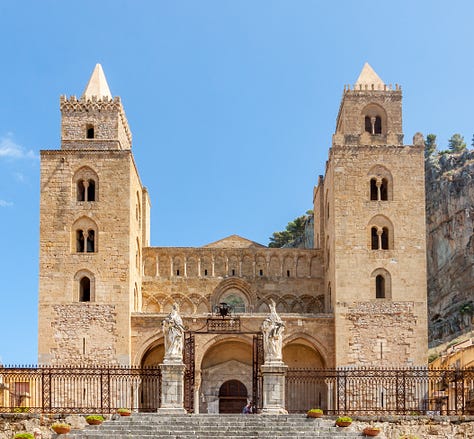
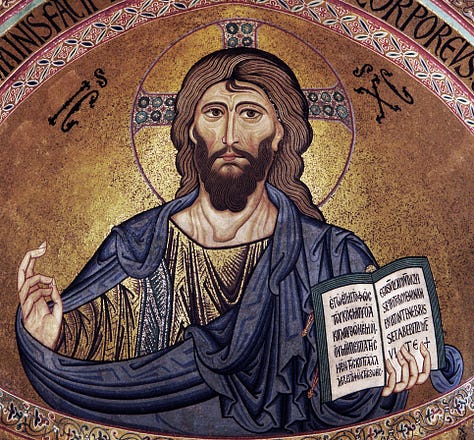


Thank you for reading, and may God bless you!


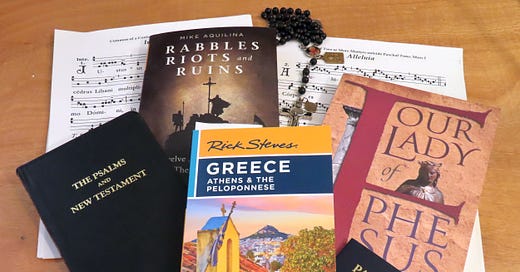



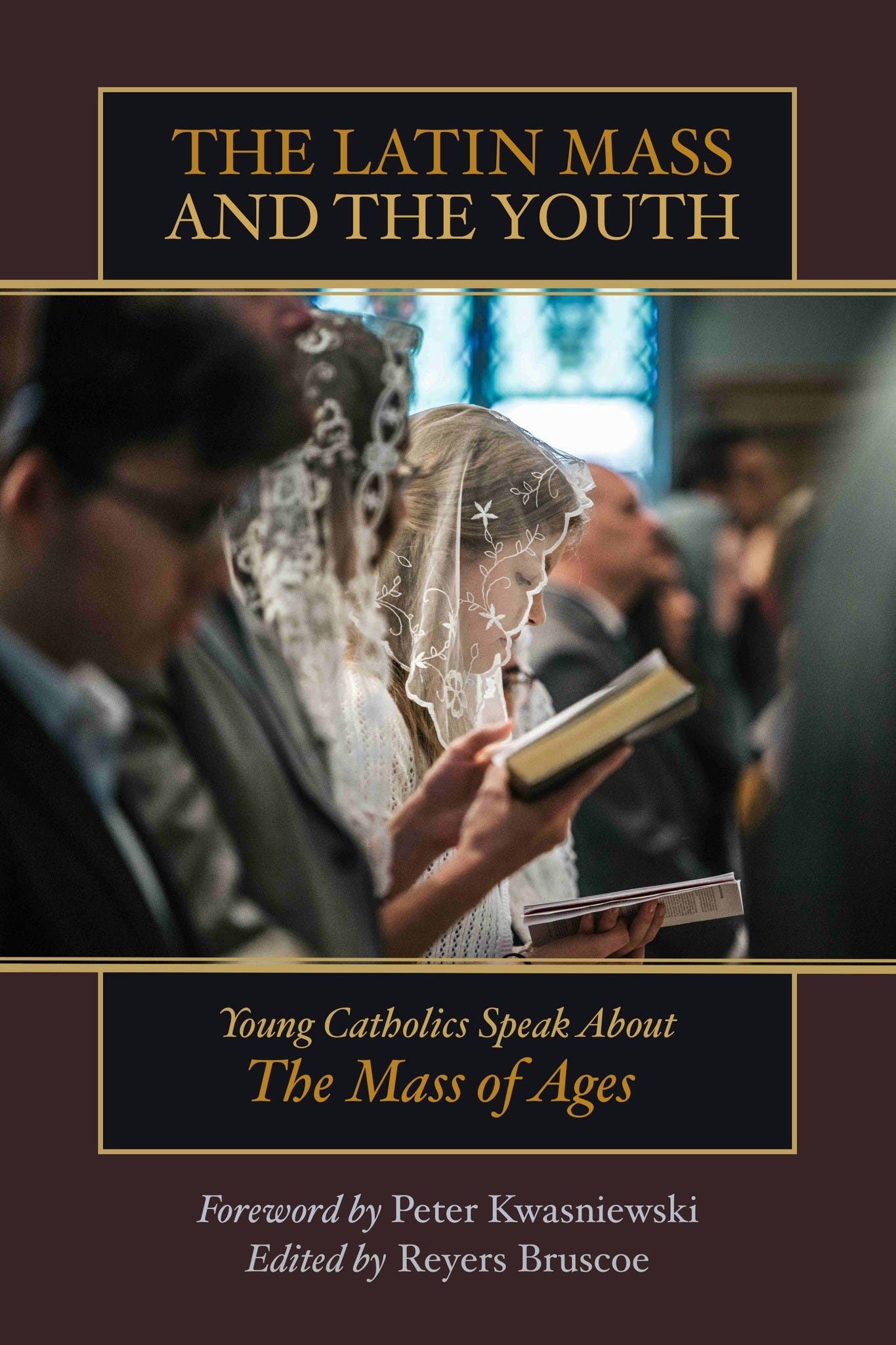
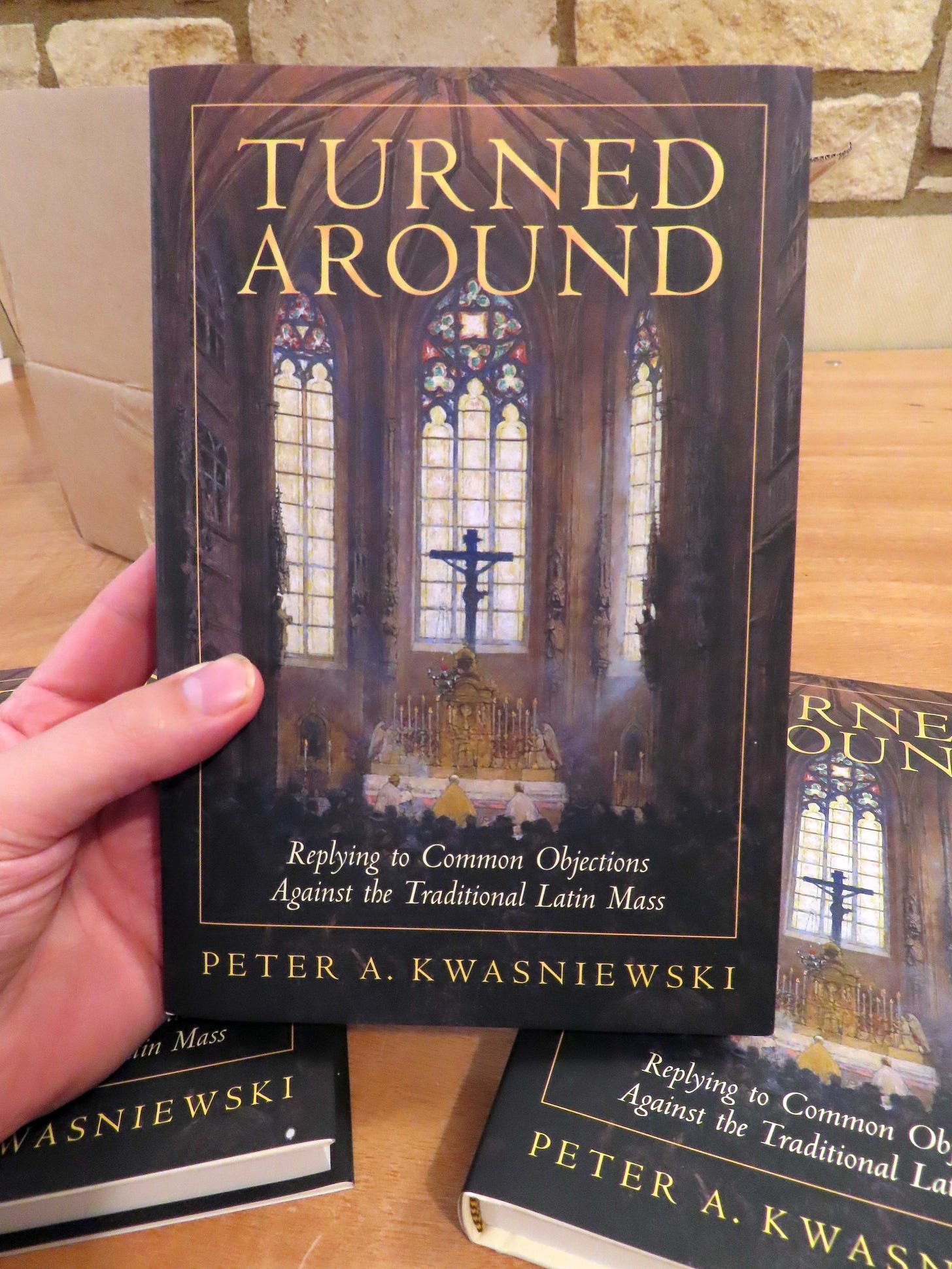
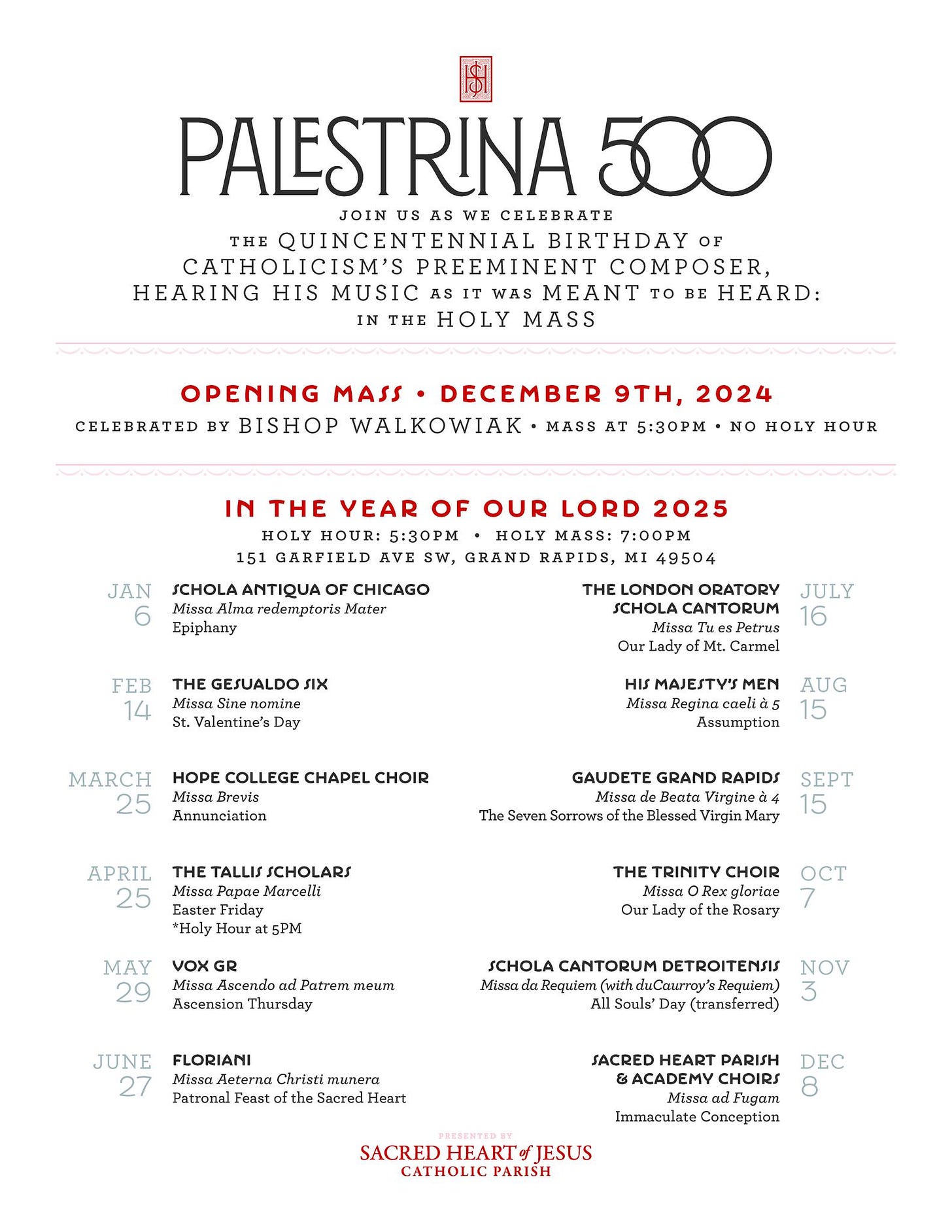
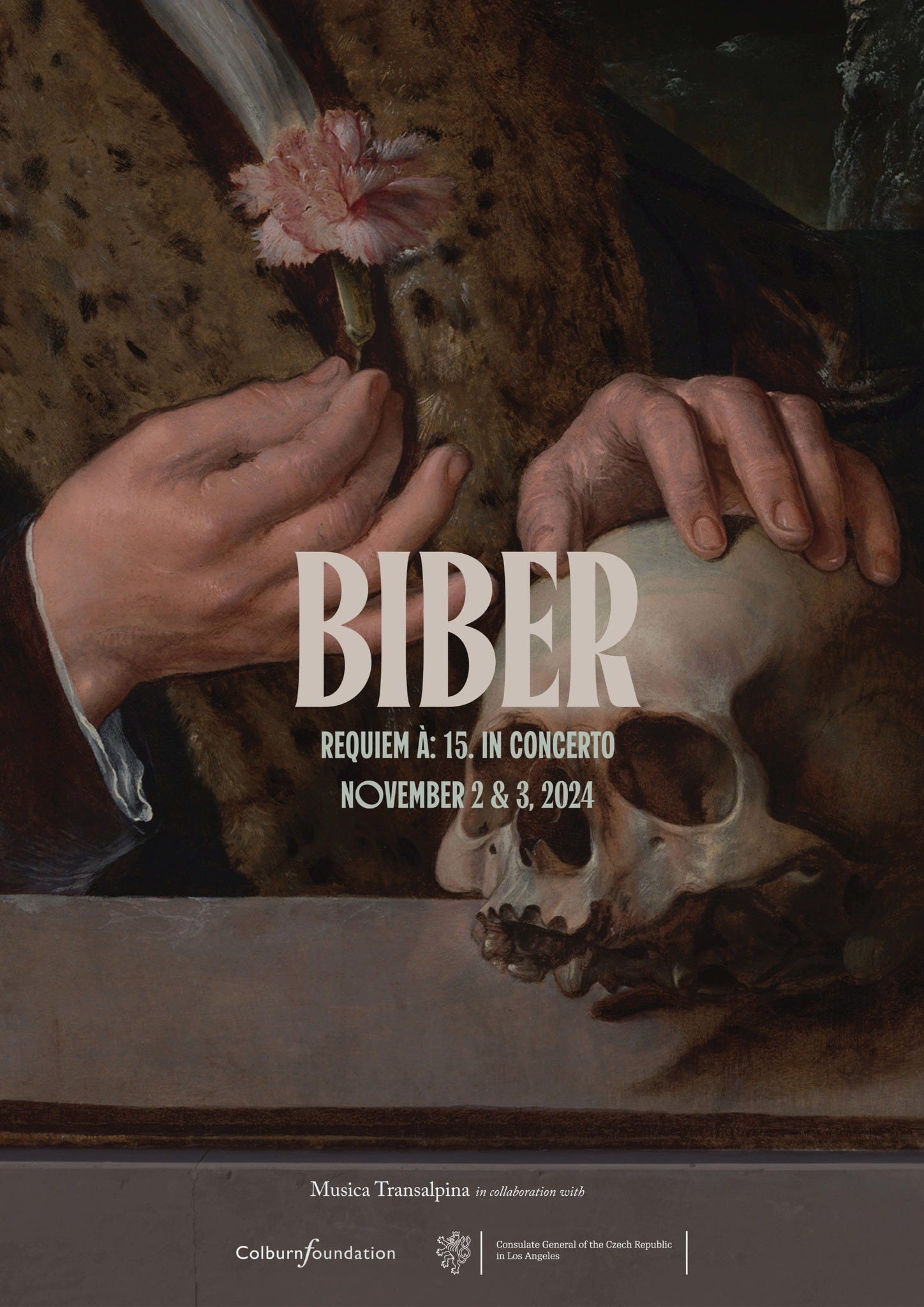
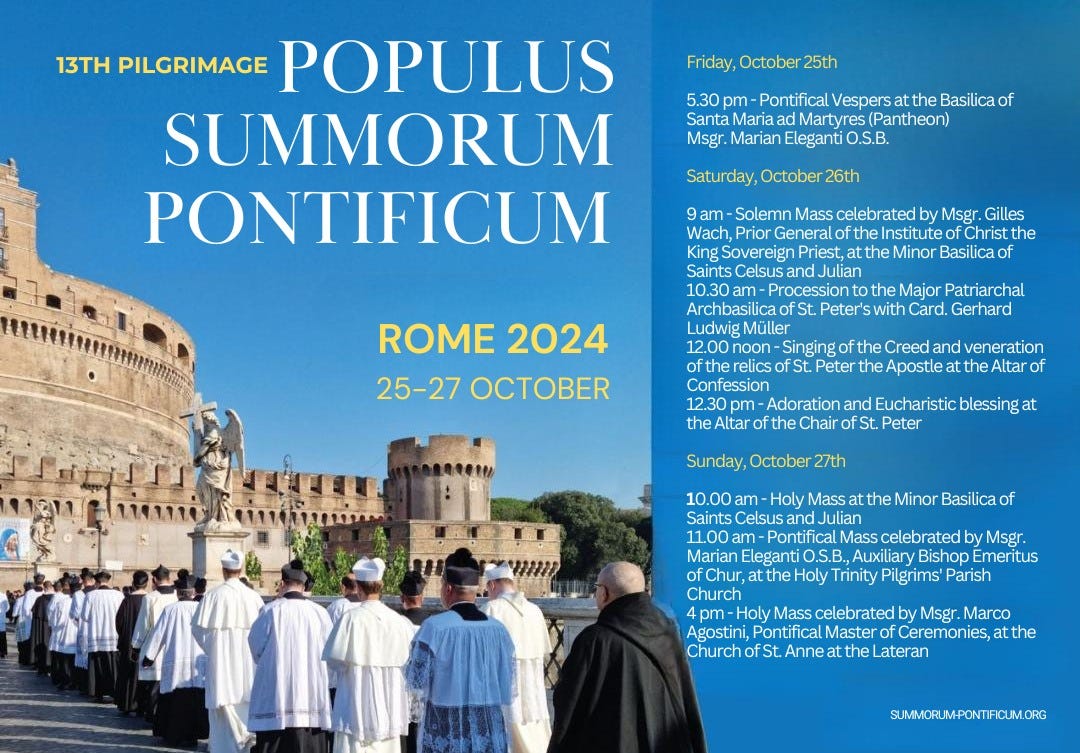
Thank you for mentioning my article, Dr. Kwasniewski, I greatly appreciate it.
I loved David Torkington's piece in Crisis this week. We need more calling out of the BS all around us - with charity in clarity of course:). Safe travels! Oh, and I very much enjoyed your interview with Eric Sammons - so much so I shared with all my family. A young nephew recently engaged and learning his faith said he can't wait to watch. There's always hope!